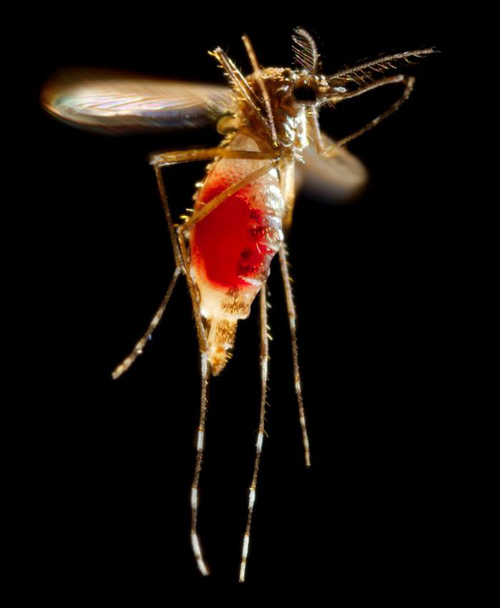Delhi Government Plans To Unleash GM Mosquitoes To Fight Dengue
By Dr. Susmita Priyadarshini
26 October, 2015
Countercurrents.org

According to media report China has set up the world's largest mosquito factory in northern Guanzhou province that tackles dengue fever by releasing one million sterilised mosquitoes every week in a bid to lessen their population with insects that don't carry the disease. Now Delhi Government is considering a Chinese proposal to mate genetically modified (GM) mosquitoes with dengue causing female members of the same species to root out the threat of this vector borne disease.
Delhi’s recent dengue outbreak not only makes a mockery of the public health , but also brings into limelight loopholes of public health care system as well as the Swachh Bharat Abhiyan. Despite forewarning the Govt., MCD, NDMC did not take adequate measures to prevent and contain the epidemic in time. On the other hand, it seems that the Govt. itself is in hurry to fulfill the targets of toilet construction while other objectives of SBM are losing ground. It is the reality of every state. But other objectives are not less important for a clean and healthy India. They are to implement effective scientific municipal waste management, to impart effective behavioural change among the people, eradicate manual scavenging, generate link that exists between sanitation and augment the capacity of the urban local bodies.
Dengue is considered as an urban epidemic . Poorly planned urban growth with all its evils like unregulated construction sites, congested colonies and poor drainage system contribute to creation of breeding grounds for adedes aegypti mosquitoes. Not only Dengue ,Japanese encephalitis has also shown a worrying trend of rising incidence and fatalist over the past 5 years. Besides these, several preventable diseases are endemic to our country which cause disability, anaemia and malnutrition . For example we can refer to non fatal Neglected Tropical Diseases like lymphatic filariasis and helminths .What is important is that NTDS are also spread by mosquitoes and flies or through contact with contaminated water or soil. So they affect the same people who lack access to clean water or improved sanitation . These poor people do not understand the link between open defecation and infant mortality or malnutrition and economic productivity. So what SBM wants to achieve is exactly what needs to be done to fight NTDs. Therefore by creating awareness about the links between sanitation and public health and promoting the adoption of healthy sanitation practices not only the SBM can be made successful but also NTDS can be controlled. But the irony is that India's sanitation policies still focus on the construction of latrines only as it did in the past. We have not learnt from the past. An impact assessment study done by NSSO revealed that toilets built in rural areas were lying unused as the villagers were wary of using them. .Again despite the repeated occurrence of the epidemic the Govt. has failed to ingrain the basic principles of cleanliness on citizens to prevent the breeding of Aedès aegypti mosquitoes.
This is not specific to Delhi only.Another major threat to public health comes from biomedical waste. Biomedical waste consists of solid , liquid, sharps and laboratory wastes that are potentially infectious or dangerous. These must be properly managed to protect the public, particularly healthcare and sanitation workers as they are regularly exposed to biomedical waste as an occupational al hazard. Public health is a state subject. Therefore it is the duty of the state to take measures for the management and disposal of bio medical waste at public health institutions through PCB in accordance with Bio medical Waste (Management and Handling)Rules 1998 of Ministry of Environment &Forest, GOI.
For the success of SBM mission, every state Govt. should learn to work with local bodies. Delhi 's recent experience teaches it. Experts have already identified that inadequate funds, lack of capacity of municipalities and district panchayats to undertake gargantuan task, failure to bring about behavioural changes among people as some of the factors that can derail the ambitious mission. As per the one year report card on the Swachh Bharat Abhiyan , states from the North East performed fairly poorly- Assam, Nagaland &Tripura not having processed any solid waste and no construction of household toilets in Arunachal Pradesh, Nagaland, Meghalaya and Tripura.
Coming to Assam, most of the municipal boards don't have incinerators. They are not equipped with any latest equipment to handle garbage. Even in Guwahati not all the nursing homes and laboratories have signed an agreement to treat the waste in the existing Common Biological Treatment Facility. Proper facility for disposal of biomedical waste has not been installed in newly established medical colleges of Assam.PM ‘s cleanliness initiative has rightly articulated the objectives that the country must aspire to achieve as public health goals. But Swachh Bharat will be a reality when health becomes a priority. Otherwise , it will remain a rebranding of Nirmal Bharat resulting in regular occurrence of epidemic.
Susmita Priyadarshini is an assistant professor in economics in DCB Girls'College, Jorhat, Assam. She has been working as a regular columnist in English daily The Assam Tribune for last 6 years. Earlier worked as economic analyst in Assamese daily Amar Asom for two years. A gold medalist in economics from Gauhati University she obtained Ph.D degree from Gauhati University in 2005.

